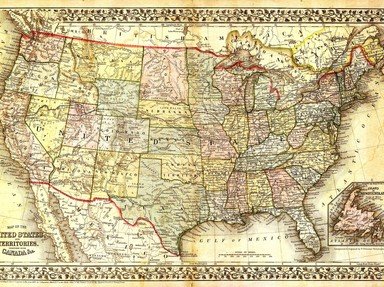Quiz Answer Key and Fun Facts
1. Oregon became the 33rd official state admitted to the union on which of the following dates?
2. Prior to its admission to the union, Oregon had been explored by many, including Spanish explorer Juan Rodríguez Cabrillo and British captain James Cook. By the early 1800s, the Lewis and Clark Expedition had made its way into the Oregon territory. Where did they build their encampment during the winter of 1805-6?
3. What was the name given to the large wagon wheeled route that connected the Missouri River to the valleys in Oregon?
4. Which of the following is believed to have last erupted in 1865 and is the highest peak in the state of Oregon?
5. On June 15, 1846 which nation signed the Oregon Treaty with the United States to officially end the Oregon Land Dispute?
6. Along with the states of California, Nevada and the Idaho Territory, what war (1864-68) took place with the indigenous bands of Bannock, Paiute and Shoshone along the river of the same name?
7. What author known for historical works "The River of the West: The Adventures of Joe Meek", "Manifest Destiny in the West" and "All Over Oregon and Washington" is considered to be "the first Oregon historian to gain regional and national attention."?
8. Oregon was a rare exception and did not have black exclusion laws.
9. In 1902, which of the following national parks was established in the state of Oregon and was its only national park throughout the entire 20th century?
10. By the 1930s, the state of Oregon was moving forward with industrial projects. Between 1934-37, which of the following was built on the Columbia River by the United States Army Corps of Engineers?
Source: Author
apathy100
This quiz was reviewed by FunTrivia editor
bloomsby before going online.
Any errors found in FunTrivia content are routinely corrected through our feedback system.
